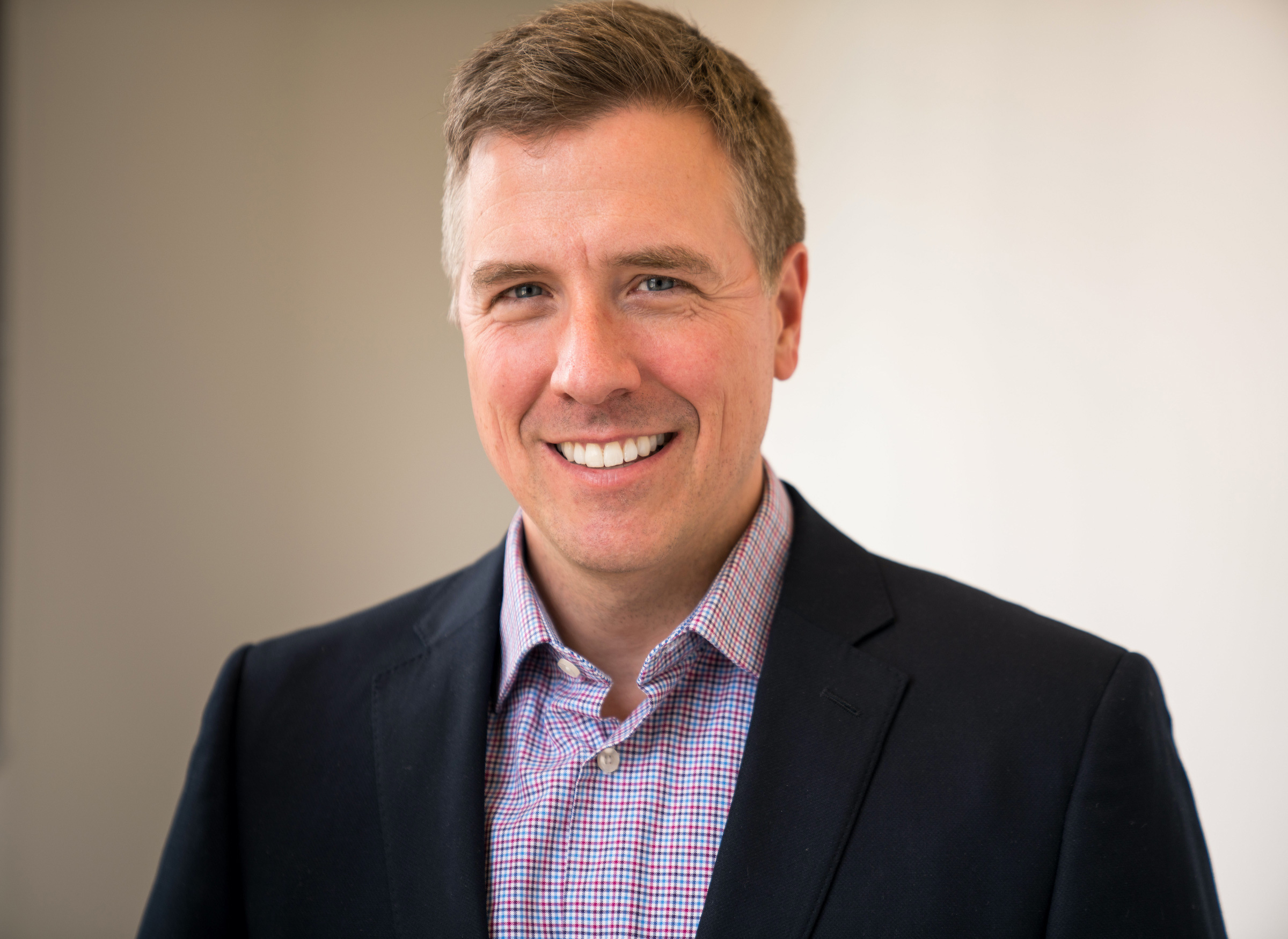
On the "U Rising" podcast, President Ruth V. Watkins engages in insightful conversations with students, staff, faculty, alumni and community stakeholders who are at the center of the state's flagship research university. President Watkins also connects with other leaders to give listeners a fresh take on top issues and innovations in higher education in Utah and across the country. You can subscribe to U Rising via iTunes, Spotify, Stitcher and other podcast streaming services.
The University of Utah produces nearly half the state’s STEM graduates every year. That fact helped the U receive a green light from the Utah Legislature for the renovation and expansion of the 100-year-old Stewart Building. The project will provide state-of-the-art research and classroom space for the STEM workforce of the future. College of Science Dean Peter Trapa also shares that the Applied Science Building has received generous support from Gary and Ann Crocker, who have stepped forward as lead donors on what is truly a public-private partnership. Thanks for technical assistance to Brooke Adams and Dave White. Music by Taylor Hartley.
President Ruth Watkins: Welcome to the U Rising podcast where you have an opportunity to meet leaders who are helping the U on its upward trajectory. This is an exciting day because we get to meet a new guest, Dr. Peter Trapa. Peter is the dean of the College of Science and a professor in mathematics. Welcome, Peter! It's delightful to have you with us today.
Peter Trapa: Well, thank you President Watkins for the kind invitation to be here. It's a real pleasure.
President Watkins: Tell listeners a little bit about your background. I know you're a relatively new dean, but you have a fairly significant history at the University of Utah.
Peter Trapa: In terms of my own academic background, I'm a mathematician. I'm a professor of mathematics and I work on developing the mathematical framework for physics, for physicists, and experiments that involve a lot of symmetry. The first time I came to The U was during the 2001-2002 academic year. I was at Harvard University at the time, and that 2001-2002 year—it was a really exciting time to be in Salt Lake City. That was the year of the Olympics. And I fell in love, not only with the university, but with the state of Utah. When I went back to Harvard, I realized that this was a place I wanted to be. So, I came back to the U in 2003 and I've been here ever since.
I served a variety of roles over the years. I was chair of the Department of Mathematics for six years, and then I moved over to chair of the Department of Physics and Astronomy. And most recently, in July of 2019, I became dean of the College of Science. So in addition to trying to further the research mission while I was chair of math and physics and astronomy, and now my role as dean, I took a real keen interest in STEM education and the role that math and science courses play in producing high-quality STEM graduates across the board. Virtually every student at the University of Utah, whether they're in STEM or not, takes a math class. And certainly every future STEM professional, every future health science professional, takes a math and science class. So, by investing our energy and doing the best that we can in promoting student success in those basic math and science classes, we can have a real impact on all students at the U, but especially our future STEM workforce.
President Watkins: Such good fortune for the University of Utah that you chose us and joined us and you've already had a remarkable impact at this institution. One of the ways that you're now having an impact is helping us think about how we design spaces for the future that will allow us to meet Utah's STEM needs. And particularly your interest in education and the way a research university integrates education and research are very helpful and important.
Just about three weeks ago, the Utah Legislature wrapped up the session for this year and there were some exciting developments for us in that session. Certainly, we are delighted that we secured support from the Legislature for the development of an applied science facility that allows us to remodel an existing space and then add onto it to meet this educational need that has really blossomed in our state. Tell us a little bit about that project, about why it's so critical and then specifically about what we're hoping to do.
Peter Trapa: This is an exciting project. It's centered around the historic Stewart Building. Many of our listeners will know the Stewart Building from their time on campus, located just north of Pioneer Memorial Theater. That's about a 100-year-old building that was built in an era of good buildings, but definitely time for a refresh. There's a lot of infrastructure in that building that's failing and to stay out in front of those escalating maintenance costs, it makes sense to make a pass at renovating that building and expanding it. And that's what this project is about.
The new renovated Stewart Building, and the expansion that's been funded, will house two very prominent departments on campus—the Department of Physics and Astronomy and the Department of Atmospheric Sciences. And together those two departments span a whole collection of important applied scientific disciplines. Everything from material science for quantum computing to biotechnology to hazardous weather forecasting and many others. And so by bringing these two departments together, we're going to really advance applied science research at the university.
Now beyond that, beyond the research component, there's also that very significant educational component that we were just talking about. So virtually every future STEM graduate trained at the U will take a class from one of those two departments housed in this new building project. I think there are over 30 undergraduate STEM degrees that rely on courses offered by these two departments. So by combining an investment in the renovation and expansion of the Stewart Building, we get to address pressing research needs, advancing really world-class forefront leading research efforts. But we also get to add state-of-the-art classroom facilities and laboratory facilities that will train the next generation of STEM students at the University of Utah.
President Watkins: This is such a spectacular project. It's so exciting for the good of our state—think of our workforce, our economy, the education of our students. I find it very compelling. When you look at the whole landscape of the applied science project, what are you most excited about, Peter?
Peter Trapa: What I'm most excited about, I touched on just briefly, is the potential for this building to reach virtually every STEM student on campus. And the U is producing an ever increasing number of STEM degrees systemwide. If you take a look at the entire system of higher education in the state of Utah, almost half of the undergraduate STEM degrees are produced by the University of Utah. And if you look at just the graduate STEM degrees, that percentage goes up significantly higher. So the exciting part of this building project is that it really is going to touch all of those STEM students at the University of Utah who are going to feed the increasingly STEM-based workforce in the state of Utah.
President Watkins: I couldn't agree more, Peter. I think that it is so compelling for our listeners to know that part of the University of Utah's upward trajectory—U rising—as we like to call it, is the role we're playing in meeting the state's workforce needs for a very science-tech and innovation-driven economy. You and your colleagues are leading the way in that area and we're grateful for it. One other area we might touch on today is the important role that donors play in helping us secure the support of the Utah Legislature. We know our legislative colleagues look to us to bring support and resources from our loyal alum and donor community. This project is no exception. Tell us a bit about donor support for this project.
Peter Trapa: Because of the potential impact of this project, it has already attracted the interest of very significant donors. Gary and Ann Crocker and the Crocker Family Foundation have recognized that this is a project that really will be transformative for the education of STEM undergraduates at the University of Utah, and they've been very generous in their lead donation. And I think it simply reflects the potential impact that this project will have.
President Watkins: So, Peter, how do you think the faculty and staff feel about this project?
Peter Trapa: There is a tremendous amount of excitement across the faculty and staff. They recognize that this is a once in a generation opportunity, transformative opportunity, to improve the student experience through modern 21st century state-of-the-art laboratory and classroom facilities. And they also recognize that it's an opportunity to really advance our research mission with the research lab that will be housed in this building as well. So a tremendous amount of excitement.
President Watkins: And I'm sure that excitement is shared by our people and our students alike. We hope that it's also shared by Utah's industries that will benefit from these graduates. Thanks so much, Peter, and I would like to add my voice of appreciation to Gary and Ann Crocker. They've been leaders in the advancement of the College of Science and the University of Utah as a whole for some years. Their support really helped us secure the partnership of the Utah Legislature in making the applied science project happen. It's an exciting one for the University of Utah, one that will build a great deal on our upward trajectory. We're grateful for your leadership, Peter, and thank you for being with us today.
Peter Trapa: Thank you, President Watkins. It was a great pleasure.
President Watkins: And I want to also thank our listeners for joining us today, and also invite you to

